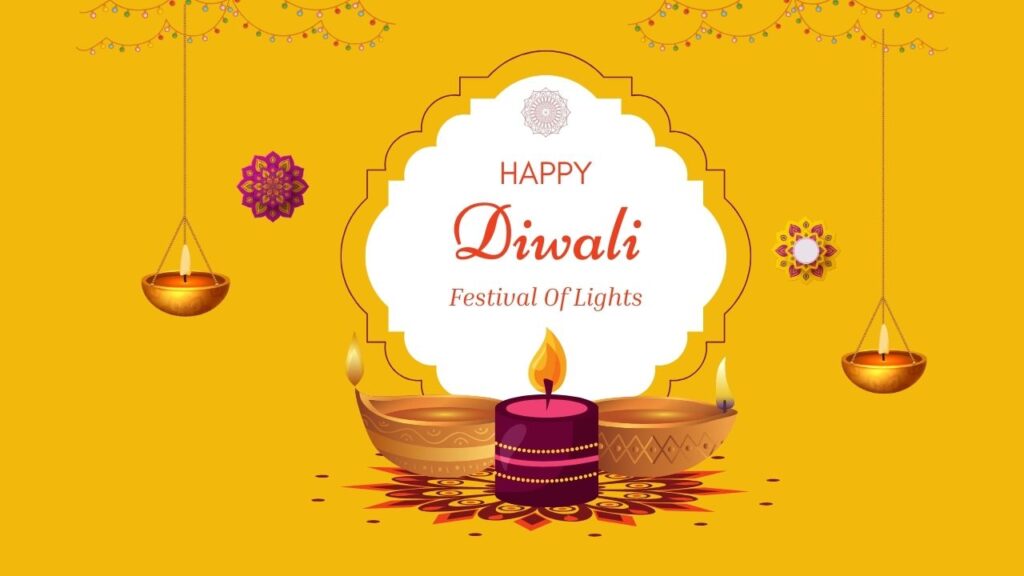What is Diwali and How is it Celebrated?
Introduction
An important holiday for Hindus, Sikhs, and Jains, Diwali is also referred to as the festival of lighting. It signifies the victory of enlightenment over ignorance, good over malevolence, and light over darkness. Observing religious rituals, gathering with loved ones, and narrating traditional tales characterize Diwali. This article aims to delve into the historical and cultural significance of Diwali, elucidate on the festival’s customs and traditions, and delve into the delectable confections that are savored throughout this joyous period.
Origins and Significance of Diwali
Diwali possesses diverse connotations and folklore across distinct regions of India. An ancient legend that holds significant renown is that of Lord Rama. Lord Rama, who had been exiled for fourteen years, ultimately triumphantly returned to his dominion after vanquishing the evil spirit Ravana. This victory and the triumph of virtue over evil are commemorated during Diwali.
Diwali is observed by Sikhs as a remembrance of Guru Hargobind Singh’s triumph over Hazrat Ganpati on his way back to Amritsar. In remembrance of the enlightenment attained by the progenitor of Jainism, Lord Mahavira, the Jains observe Diwali.
When is Diwali Celebrated?
The precise date of Diwali differs annually due to the fact that it is observed during a moonless night in November or October. The festival is a five-day event, during which every day observes and holds unique rituals and significance.
The Five Days of Diwali
Day 1: Dhanteras
Commencing the festival is Dhanteras, which is alternatively referred to as Dhanatrayodashi. People clean and decorate their residences, purchase new clothing and jewelry, and offer prayers to Ganesh, the deity of wisdom and good fortune, and Lakshmi, the goddess of wealth. Today is considered a favorable day to acquire metallic kitchen appliances or implements.
Day 2: Naraka Chaturdashi
The second day of Diwali is referred to as Choti Diwali or Naraka Chaturdashi. The occasion calls for impromptu arrangements, the exchange of gifts, and the construction of elaborate rangoli arrangements out of colored powders, rice flour, and flower blossoms. Savory finger foods and snacks are relished during the celebrations.
Day 3: Diwali
Diwali is primarily observed on the third day. At sunset, supplications are directed towards celestial beings, while dwellings are illuminated via diyas, which are diminutive clay lanterns. Historically, the celebration has included fireworks displays; however, pollution concerns have prompted a shift toward more eco-friendly celebrations in recent years. An opulent dinner is shared with friends and family.
Day 4: Govardhan Puja
As the fourth day of Diwali, Govardhan Puja is observed. It is a memorial to Lord Krishna, whose action of elevating the Govardhan Hill to shield the populace from torrential downpours is commemorated by this structure. Observances include preparing miniature mountains of food, offering prayers, and sharing meals with loved ones.
Day 5: Bhai Dooj
Diwali’s last day is referred to as Bhai Dooj. It honours the sibling bond between siblings. In exchange for their benevolent wishes regarding their siblings, sisters are bestowed with sweets and gifts. It is a day devoted to fostering stronger familial bonds and expressing gratitude.
Diwali Traditions and Customs
In addition to being cleaned, residences are adorned with vibrant rangoli patterns, blossoms, and lighting during Diwali. Individuals don new garments and exchange presents with their loved ones. In observance of religious tradition, prayers to deities and the illumination of diyas are performed. In addition to communal gatherings and gorging, Diwali is a time for jubilant celebrations.
Delicious Diwali Treats
An occasion is not fully realized without delectable cuisine, and Diwali is no different. “Mithai,” or sweets, are an essential component of the celebrations. Deficiencies and guests alike are presented with these dairy-based delights. Kalakand and boondi laddu are two well-liked sweets that are consumed during Diwali.
During Diwali, savory treats are also consumed in addition to sweet ones. Vegetable samosas, chicken drumsticks seasoned with turmeric and cashews, malai kofta served in a fiery broth, and uncomplicated onion bhajis are among these. As a main course, curries like chicken tikka masala and vegetable balti are frequently presented.
Conclusion
Diwali is a communal occasion utilized to commemorate the victory of righteousness over malevolence and to disseminate happiness and illumination. A time when religious observances, communal assemblies, and the consumption of delectable sweets are prevalent. Gaining a comprehensive comprehension of the origins and traditions surrounding Diwali enables one to wholeheartedly partake in the festivities with reverence and zeal. Joyous Diwali!








